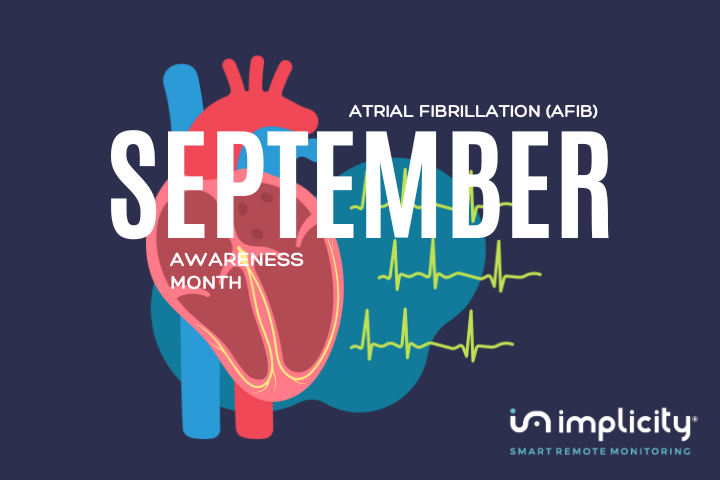September is not just about the changing seasons or the back-to-school rush; it’s also a significant month for health awareness. Among the various health observances, AFib Awareness Month stands out, dedicated to raising awareness about atrial fibrillation (AFib)—a condition that affects millions of people worldwide. Understanding AFib, its risks, and how to manage it can be lifesaving. Here’s why AFib Awareness Month is so important and what you need to know about this condition.
What is AFib?
Atrial fibrillation, commonly known as AFib, is the most common type of irregular heart rhythm (arrhythmia). It occurs when the upper chambers of the heart (atria) beat irregularly and out of sync with the lower chambers (ventricles). This can lead to a range of symptoms, from a fluttering heartbeat and fatigue to more serious complications like stroke and heart failure.
AFib can be intermittent or persistent, and while some people may not experience noticeable symptoms, others might feel palpitations, shortness of breath, or dizziness. The erratic rhythm can cause blood to pool in the heart, leading to the formation of blood clots. If a clot travels to the brain, it can cause a stroke, making AFib a serious condition that requires medical attention.
Atrial fibrillation, commonly known as AFib, is the most common type of irregular heart rhythm (arrhythmia). It occurs when the upper chambers of the heart (atria) beat irregularly and out of sync with the lower chambers (ventricles). This can lead to a range of symptoms, from a fluttering heartbeat and fatigue to more serious complications like stroke and heart failure.
AFib can be intermittent or persistent, and while some people may not experience noticeable symptoms, others might feel palpitations, shortness of breath, or dizziness. The erratic rhythm can cause blood to pool in the heart, leading to the formation of blood clots. If a clot travels to the brain, it can cause a stroke, making AFib a serious condition that requires medical attention.
Why AFib Awareness Month Matters
The observance of AFib Awareness Month in September is crucial for several reasons:
The observance of AFib Awareness Month in September is crucial for several reasons:
- Raising Awareness: Many people are unaware that they have AFib because it can be asymptomatic or mistaken for other conditions. Awareness campaigns help educate the public about the signs and risks associated with AFib, encouraging people to seek medical advice if they experience symptoms.
- Promoting Early Detection: Early detection of AFib is key to preventing serious complications like stroke. During this month, healthcare providers emphasize the importance of regular check-ups, especially for those at higher risk, such as older adults or individuals with underlying health conditions like high blood pressure, diabetes, or heart disease.
- Highlighting Treatment Options: AFib management has evolved significantly, with a range of treatment options available, from medications to control heart rate and rhythm, to procedures like cardioversion, catheter ablation, and the use of anticoagulants to reduce stroke risk. AFib Awareness Month is an opportunity to educate patients about these options and the importance of adhering to prescribed treatments.
- Encouraging Lifestyle Changes: Lifestyle modifications can play a critical role in managing AFib. This includes maintaining a healthy weight, reducing alcohol consumption, quitting smoking, managing stress, and staying physically active. Public health campaigns during AFib Awareness Month often focus on these preventive measures.
- Supporting Research and Innovation: The month also serves as a reminder of the ongoing need for research into AFib. Advances in medical technology, such as wearable devices that monitor heart rhythms, have the potential to revolutionize how AFib is detected and managed. By supporting research initiatives, we can hope for better treatments and perhaps even a cure in the future.

